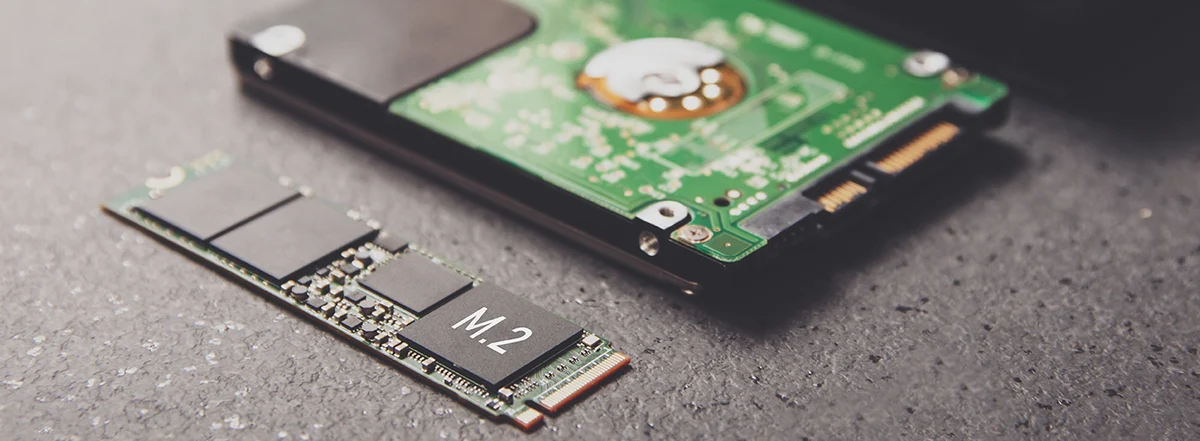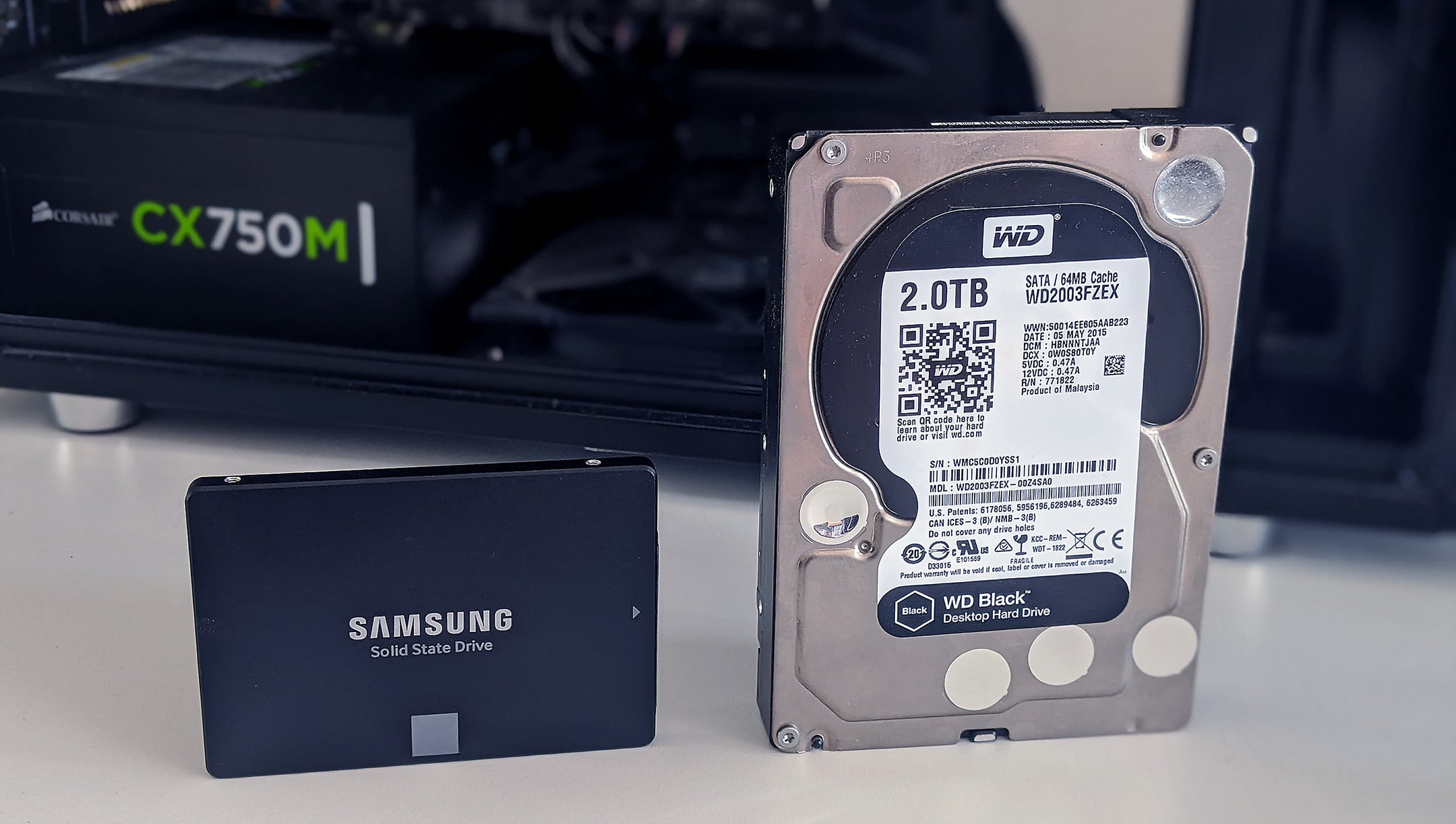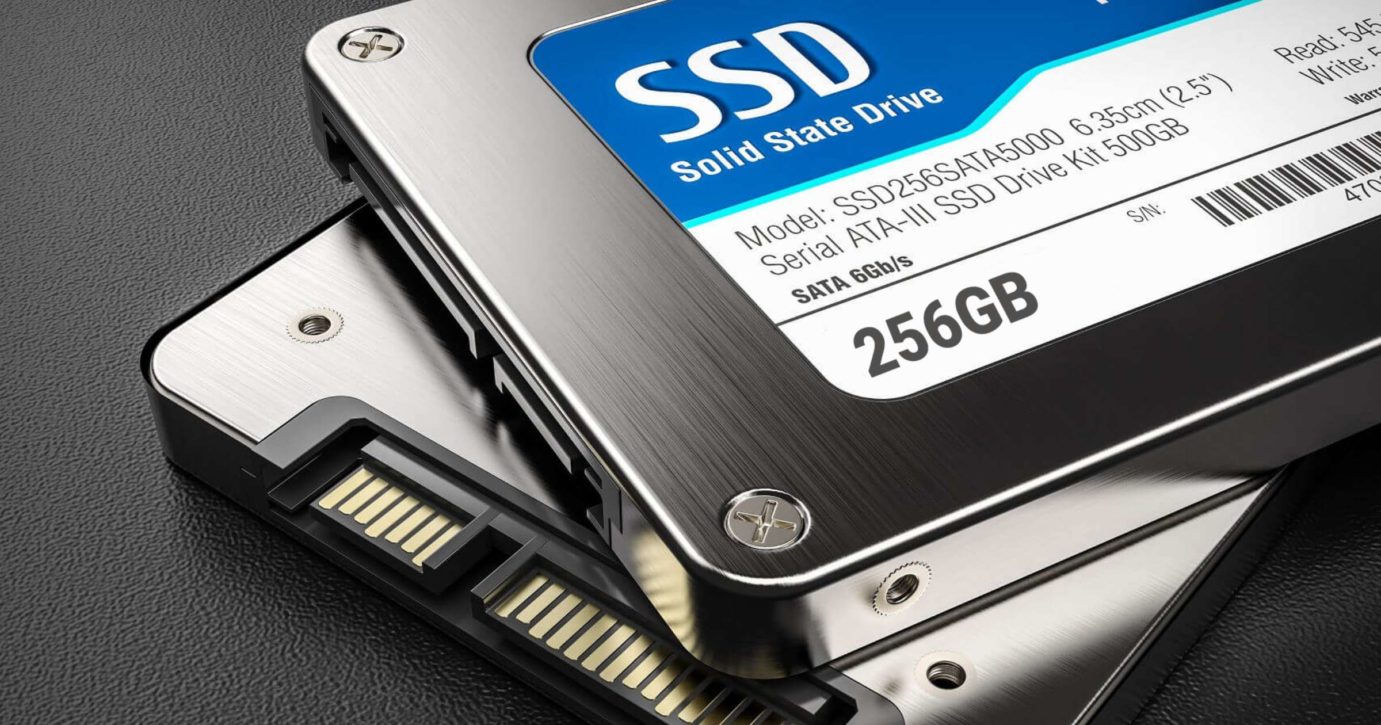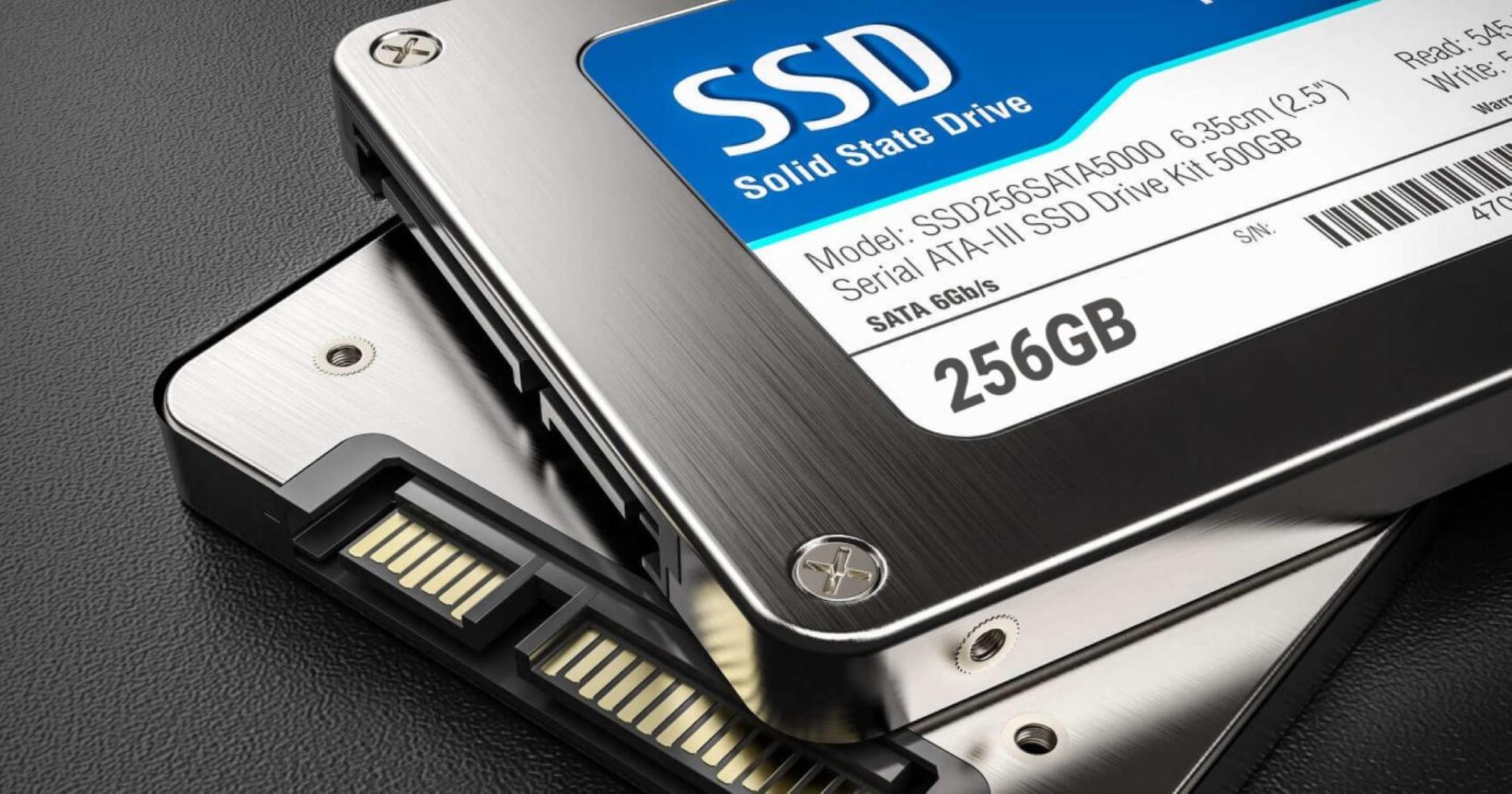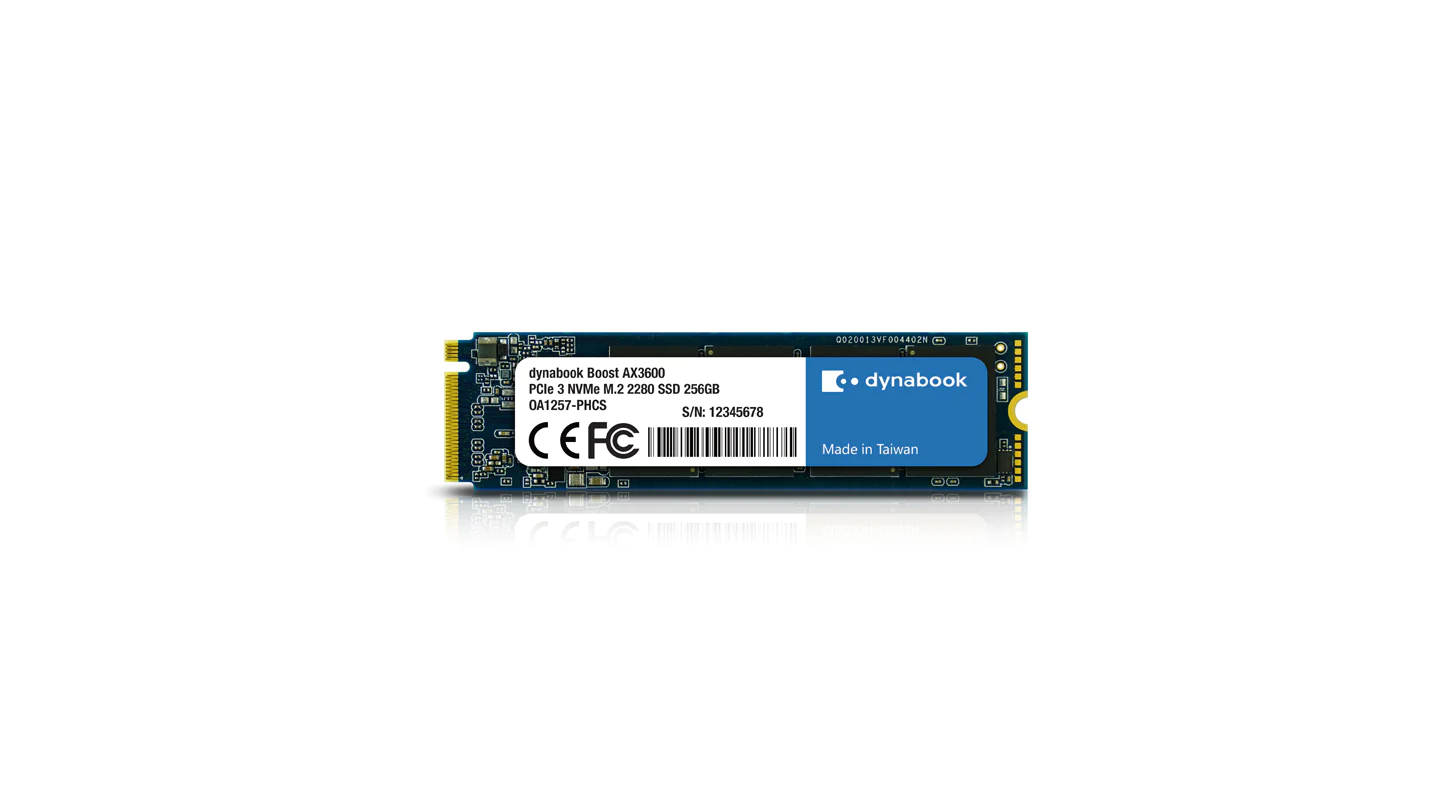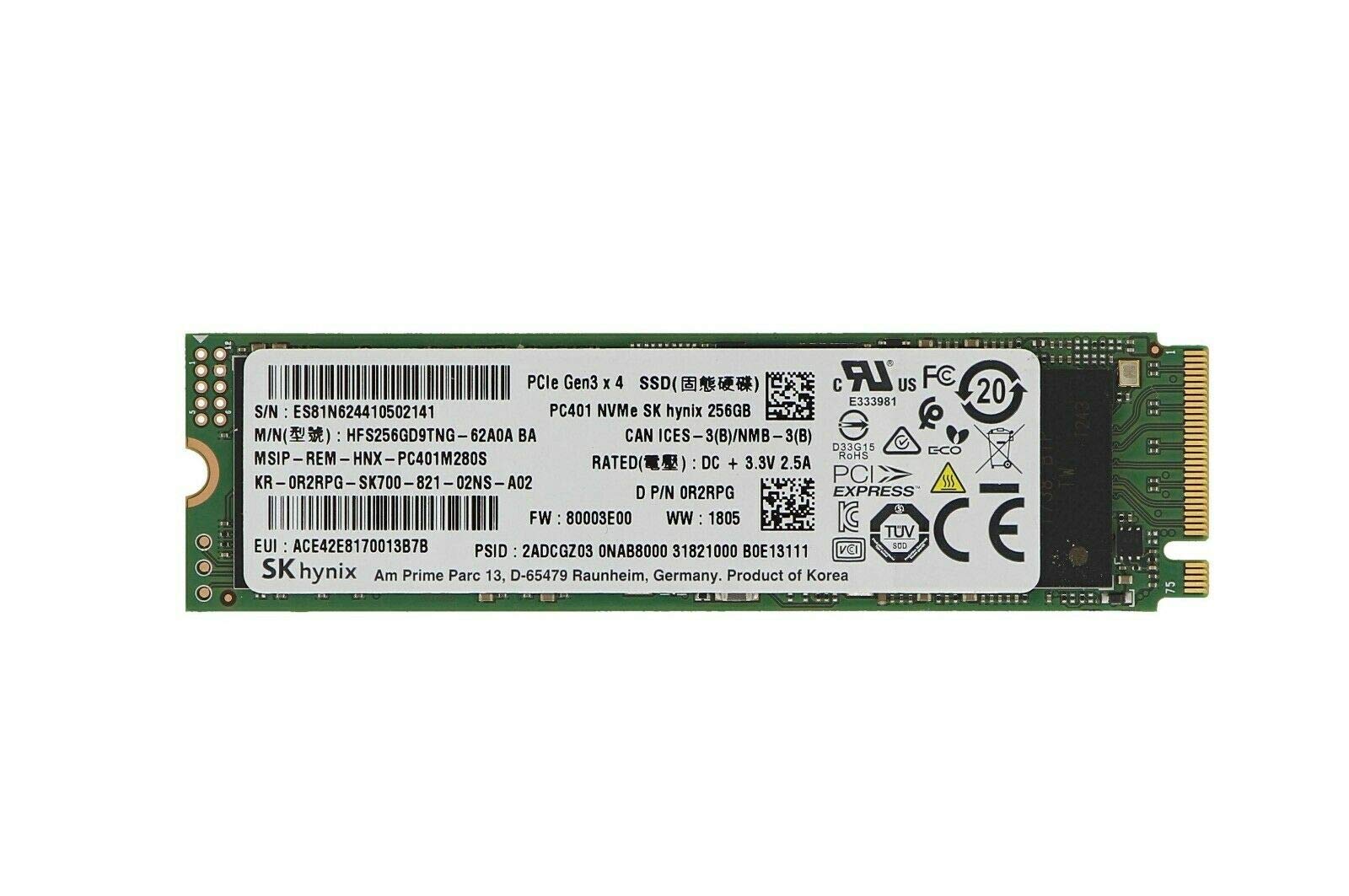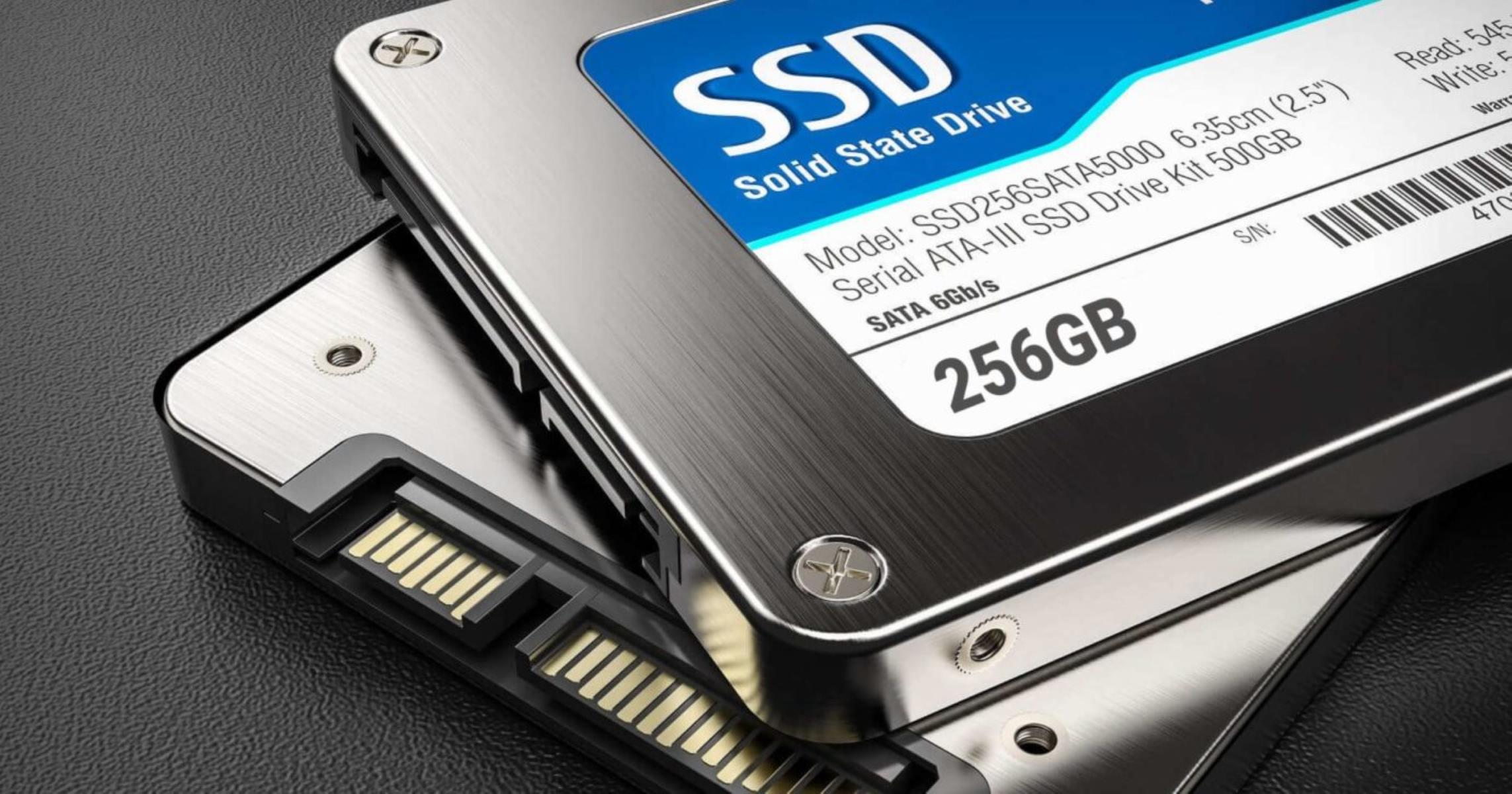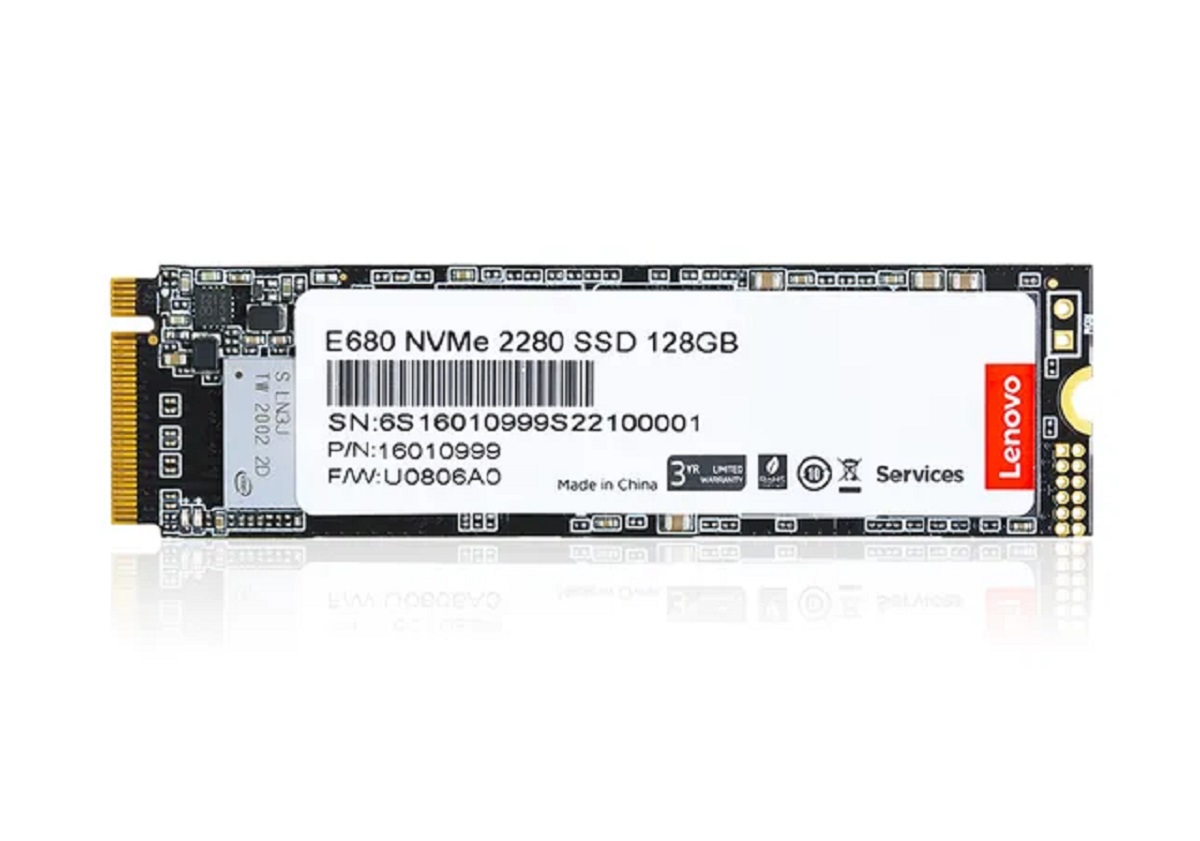Introduction
Welcome to the world of storage devices! If you’ve ever wondered about the differences between a 256GB Solid State Drive (SSD) and a regular hard drive (HDD), you’ve come to the right place. In this article, we will explore the various aspects that set these two storage options apart, enabling you to make an informed decision for your storage needs.
In today’s digital age, data storage plays a vital role in our lives. Whether it’s storing important documents, cherished memories, or hefty multimedia files, having a reliable and efficient storage solution is crucial. Both SSDs and HDDs have their own unique features, advantages, and disadvantages, making them suitable for different scenarios.
SSDs and HDDs fundamentally differ in the way they store and retrieve data. While HDDs use magnetism to read and write data on spinning disks, SSDs utilize flash memory chips, similar to those found in USB drives or memory cards. This difference in technology results in distinct characteristics and performance variations.
In this article, we will delve into the physical differences, performance variations, capacity disparities, power consumption discrepancies, and cost variations between a 256GB SSD and a regular HDD. By the end, you’ll have a comprehensive understanding of the benefits and limitations of each option, allowing you to determine which one suits your needs best.
Definition and Overview of a Solid State Drive
A Solid State Drive (SSD) is a type of storage device that uses flash memory to store and retrieve data. Unlike a regular hard drive that relies on spinning disks, an SSD has no moving parts, making it faster, more reliable, and less susceptible to physical damage due to impact or vibration.
SSDs utilize NAND flash memory, which consists of interconnected memory cells that can retain data even when powered off. This non-volatile nature of flash memory ensures that data is preserved even during power outages or system failures.
One of the main advantages of SSDs is their incredible speed. Traditional hard drives involve mechanical processes, such as the rotation of disks and the movement of read/write heads, which can cause delays and limit the overall performance. In contrast, SSDs provide almost instantaneous access to data, resulting in significantly faster boot times, file transfers, and application loading.
Another noteworthy feature of SSDs is their durability. Without any mechanical components that can fail over time, SSDs are more resistant to shocks, vibrations, and temperature fluctuations. This makes them a reliable choice for portable devices, as they can withstand the rigors of daily use and transportation without compromising data integrity.
SSDs also have a smaller physical footprint compared to regular hard drives. They are typically lighter and more compact, making them ideal for slim laptops, ultrabooks, and small form-factor desktops. The compact size of SSDs also allows for more flexibility in device design, enabling manufacturers to create sleek and lightweight devices.
It’s important to note that SSDs come in different form factors, interfaces, and capacities to cater to various needs. The most common form factors are 2.5-inch drives, mSATA, and M.2, with interfaces such as SATA, PCIe, and NVMe. These variations offer compatibility with different devices and support varying levels of performance.
In summary, SSDs provide fast, reliable, and durable storage solutions that outperform regular hard drives in terms of speed, durability, and physical footprint. With their solid-state technology and flash memory architecture, SSDs have become a popular choice for users seeking enhanced performance and reliability in their storage devices.
Definition and Overview of a Regular Hard Drive
A regular hard drive, also known as a hard disk drive (HDD), is a traditional storage device that uses magnetic storage to store and retrieve data. It consists of one or more spinning disks or platters coated with a magnetic material and a read/write head that moves across the surface of these disks to read and write data.
The key characteristic of a regular hard drive is its large storage capacity. HDDs are available in various sizes, ranging from a few hundred gigabytes to several terabytes, making them suitable for users who require ample space for storing multimedia files, large databases, and extensive software libraries.
One of the primary advantages of regular hard drives is their cost-effectiveness. HDDs are relatively more affordable compared to SSDs of the same capacity. This affordability makes them a desirable choice for individuals and businesses who need high-capacity storage without breaking the bank.
Regular hard drives are widely compatible with different devices and operating systems. They typically use the Serial ATA (SATA) interface, which makes them compatible with a wide range of computers, laptops, and external storage enclosures. Moreover, HDDs can be easily replaced or upgraded, allowing users to expand their storage capabilities without much hassle.
While regular hard drives provide ample storage space, they are slower in terms of data access and retrieval compared to SSDs. The mechanism of spinning disks and read/write head movement adds latency, resulting in slower boot times, file transfers, and application load times. Although advancements have been made to improve performance, regular hard drives still lag behind SSDs in terms of speed.
Additionally, regular hard drives are more vulnerable to physical damage due to their moving parts. The spinning disks and the read/write head can be sensitive to shocks, vibrations, and extreme temperature conditions. Consequently, it’s important to handle regular hard drives with care to avoid data loss or drive failure.
In summary, regular hard drives offer high storage capacity at an affordable price, making them suitable for users who require large amounts of storage space without a significant budget. However, they are slower in terms of data access, and their moving parts increase the risk of mechanical failure. Regular hard drives are a reliable option for users with extensive data storage needs, but they may not provide optimal performance for tasks that require speed and responsiveness.
Physical Differences Between a Solid State Drive and a Regular Hard Drive
One of the significant differences between a Solid State Drive (SSD) and a regular hard drive (HDD) lies in their physical composition and construction.
Let’s start with the regular hard drive. HDDs consist of spinning platters made of magnetic materials, typically made of glass or aluminum, which store data. These platters spin at a high speed, often measured in revolutions per minute (RPM), while a read/write head moves back and forth across the surface of the platters to read and write data. The read/write head uses magnets to change the orientation of the tiny magnetic particles on the surface of the platters, allowing data to be stored and retrieved.
On the other hand, SSDs have a more compact and solid-state design. They are usually made up of interconnected flash memory chips, similar to those found in USB drives or memory cards. These chips store data in a grid-like pattern of memory cells. Each memory cell can hold multiple bits of data, and to access the data, electrical charges are sent to the specific cells.
Since SSDs have no moving parts, they offer several advantages over regular hard drives. For one, the absence of moving parts in SSDs makes them shock-resistant, as there are no delicate components prone to damage in case of drops or impacts. In contrast, regular hard drives with spinning platters are more susceptible to damage and data loss if subjected to physical shock or vibration.
The compact and solid-state nature of SSDs also allows them to be more space-efficient and lightweight compared to regular hard drives. This makes SSDs an ideal choice for portable devices, such as laptops and ultrabooks, where slim and lightweight designs are desired.
Furthermore, the lack of moving parts in SSDs contributes to their silent operation. Unlike regular hard drives that generate noise from the spinning platters and moving read/write heads, SSDs operate silently, providing a quieter computing experience.
In summary, the physical differences between an SSD and a regular hard drive lie in the presence or absence of moving parts. While regular hard drives rely on spinning platters and moving read/write heads, SSDs employ flash memory chips for data storage, resulting in a more compact, lightweight, shock-resistant, and silent storage solution.
Performance Differences Between a Solid State Drive and a Regular Hard Drive
The performance differences between a Solid State Drive (SSD) and a regular hard drive (HDD) are distinct and can greatly impact the overall computing experience.
One of the primary advantages of SSDs is their speed. SSDs provide significantly faster read and write speeds compared to regular hard drives. This is due to the lack of moving parts in SSDs, which eliminates the mechanical latency associated with regular hard drives. When retrieving or storing data, SSDs can access the information almost instantaneously, resulting in faster boot times, quicker application launches, and more responsive overall system performance.
On the other hand, regular hard drives are comparatively slower due to their mechanical nature. The spinning platters and the moving read/write heads introduce latency, causing slower data access and transfer speeds. This can lead to longer boot times, slower application loading times, and delays in file transfers, especially when dealing with large files.
In terms of random access speed, SSDs have a significant advantage. SSDs can access data in a non-linear manner, meaning that they can retrieve information from any location on the drive with virtually no performance impact. This makes SSDs ideal for tasks that require frequent and random access to data, such as running multiple applications simultaneously or loading data-heavy software.
Regular hard drives, on the other hand, have limitations when it comes to random access. As the read/write head needs to physically move across the spinning platters to access data, there can be delays in retrieving information. This makes regular hard drives less efficient for tasks that require quick and random data retrieval, resulting in potential slowdowns and reduced overall system performance.
Another aspect where SSDs offer superior performance is in durability and reliability. The solid-state nature of SSDs makes them resistant to shock, vibration, and temperature fluctuations, reducing the risk of data loss or drive failure. Conversely, regular hard drives are more susceptible to mechanical failures due to their moving parts, making them more prone to damage if mishandled or exposed to harsh environmental conditions.
In summary, the performance differences between an SSD and a regular hard drive are striking. SSDs offer faster read and write speeds, quicker random access, and improved overall system responsiveness. Regular hard drives, with their mechanical nature, tend to be slower, especially in random access scenarios, and are less durable and reliable compared to SSDs.
Capacity Differences Between a 256GB Solid State Drive and a Regular Hard Drive
When it comes to storage capacity, there are notable differences between a 256GB Solid State Drive (SSD) and a regular hard drive (HDD).
A 256GB SSD offers a total storage capacity of 256 gigabytes. This capacity is measured in binary base units, where 1 gigabyte (GB) is equal to 1,073,741,824 bytes. SSDs come in various capacities ranging from a few gigabytes to several terabytes, allowing users to choose the suitable capacity for their storage needs.
On the other hand, a regular hard drive with a capacity of 256GB offers the same amount of storage space. However, it’s worth noting that the actual usable capacity of a hard drive is slightly less due to formatting overhead and system file allocation. The difference is typically negligible, but it’s important to consider when comparing storage capacities.
Although a 256GB SSD and a 256GB regular hard drive have the same advertised capacity, the actual physical storage technology employed in each device differs.
In regular hard drives, data is stored on spinning magnetic platters using read/write heads. Each platter has multiple concentric tracks and sectors where data is organized and stored. The capacity of a regular hard drive is determined by the number of platters, the density of the tracks, and the number of sectors on each track.
On the other hand, SSDs use flash memory chips to store data. Each memory chip consists of several memory cells, and each cell can store multiple bits of data. The capacity of an SSD is determined by the number and density of these memory chips.
In terms of capacity, regular hard drives tend to offer higher storage capacities compared to SSDs. HDDs are available in sizes ranging from several hundred gigabytes to multiple terabytes, allowing users to store a vast amount of data, including large multimedia files, extensive software libraries, and databases.
However, it’s essential to consider that SSD technology has been rapidly evolving, and higher-capacity SSDs are becoming more available and affordable. Although they may not currently offer the same storage capacity as regular hard drives, SSDs compensate for this with their superior performance, reliability, and other advantages discussed earlier.
Ultimately, the choice between a 256GB SSD and a 256GB regular hard drive depends on the specific storage needs and requirements of the user. If high-speed performance, durability, and compact size are prioritized over storage capacity, an SSD may be the preferred option. However, if a larger storage capacity is crucial, a regular hard drive would be the more suitable choice.
Power Consumption Differences Between a 256GB Solid State Drive and a Regular Hard Drive
When it comes to power consumption, there are notable differences between a 256GB Solid State Drive (SSD) and a regular hard drive (HDD).
SSDs are known for their energy efficiency. Since SSDs have no moving parts and rely on flash memory storage, they consume less power compared to regular hard drives. The lack of spinning platters and moving read/write heads in SSDs results in lower power requirements. This makes SSDs an excellent choice for portable devices such as laptops, tablets, and smartphones, where battery life is a crucial factor.
Regular hard drives, being mechanical devices, consume more power due to the operations involved in reading and writing data. The spinning of the platters, movement of the read/write heads, and the continuous powering of the drive’s internal components contribute to higher power consumption.
The power consumption of a regular hard drive can vary depending on factors such as the rotational speed of the platters, capacity, and age of the drive. Generally, larger capacity drives and those with higher RPM will consume more power compared to smaller and slower drives.
On the other hand, SSDs have the advantage of utilizing power only when actively reading or writing data. When the drive is idle or in a state of low activity, SSDs consume minimal power. This is due to their ability to turn off individual memory cells, greatly reducing power consumption during idle periods. As a result, SSDs are more power-efficient than regular hard drives, improving overall energy efficiency and extending battery life in portable devices.
It is important to consider power consumption not only in terms of energy efficiency but also in its impact on system temperature. The lower power consumption of SSDs generates less heat compared to regular hard drives. This can contribute to better system cooling and overall stability, especially in compact and tightly spaced devices.
In summary, SSDs have a significant advantage over regular hard drives when it comes to power consumption. The absence of moving parts and the ability to power off inactive memory cells make SSDs more energy-efficient, resulting in longer battery life for portable devices and reduced heat generation. Regular hard drives, with their mechanical operations, consume more power on average, making them less power-efficient and potentially contributing to higher system temperatures.
Cost Differences Between a 256GB Solid State Drive and a Regular Hard Drive
Cost is an important factor to consider when choosing between a 256GB Solid State Drive (SSD) and a regular hard drive (HDD).
SSDs are generally more expensive compared to regular hard drives. The cost per unit of storage for an SSD is higher due to the advanced technology and flash memory used in their construction. As a result, SSDs with larger capacities are priced at a premium, making them a more significant investment compared to regular hard drives.
Regular hard drives, on the other hand, offer a more cost-effective storage solution. HDDs are known for their affordability, as they have been in the market for a longer time and have a larger supply chain. The cost per unit of storage for a regular hard drive is typically lower compared to an SSD, especially when considering higher capacity drives.
The price difference between an SSD and a regular hard drive becomes more apparent as the storage capacity increases. When comparing similar capacity drives, the cost gap may still exist, but it narrows down. This means that while a 256GB SSD may be more expensive than a 256GB regular hard drive, the price difference may not be as significant as when comparing larger capacity drives.
It’s important to note that the cost difference between SSDs and regular hard drives is gradually decreasing over time. As technology advances and economies of scale come into play, SSD prices have been steadily declining. This trend has made SSDs more accessible and affordable for consumers, closing the gap between SSD and HDD pricing.
When considering the cost, it’s crucial to weigh it against the performance and other advantages offered by SSDs. While SSDs may be more expensive, they provide superior speed, durability, and energy efficiency compared to regular hard drives. If the budget allows, investing in an SSD can greatly enhance the overall computing experience.
Ultimately, the choice between a 256GB SSD and a regular hard drive depends on the budget, storage needs, and priorities of the user. If cost is the primary consideration, a regular hard drive offers a cost-effective solution. However, if higher performance, durability, and energy efficiency are valued, the added cost of an SSD may be well worth it.
Which Option Is Best for You: 256GB Solid State Drive or Regular Hard Drive?
Choosing between a 256GB Solid State Drive (SSD) or a regular hard drive (HDD) depends on your specific needs, priorities, and budget.
If speed, responsiveness, and overall performance are crucial to you, then an SSD is likely the best option. SSDs offer significantly faster read and write speeds, quicker random access, and improved system responsiveness compared to regular hard drives. They are ideal for tasks that involve frequent data access or require quick boot times, such as running multiple applications simultaneously or handling large multimedia files.
Additionally, if you prioritize durability and reliability, an SSD is the more suitable choice. The lack of moving parts in SSDs makes them less susceptible to shock, vibration, and temperature fluctuations, reducing the risk of data loss or drive failure. This makes them highly reliable for both portable and stationary devices.
On the other hand, if you require a larger storage capacity at a more affordable cost, a regular hard drive may be the better option. HDDs offer higher storage capacities at a lower price per unit of storage compared to SSDs. They are suitable for users who need ample space for storing large amounts of data, such as multimedia files, extensive software libraries, and databases.
Regular hard drives are also widely compatible with different devices and operating systems. They use the standard Serial ATA (SATA) interface and offer a wide range of storage capacities, making them suitable for various computer systems and setups.
Considering power consumption, SSDs are more energy-efficient than regular hard drives, making them ideal for portable devices or situations where longer battery life is essential. SSDs consume less power due to their solid-state nature and the ability to power off inactive memory cells. Regular hard drives, with their mechanical operations, consume more power on average.
Ultimately, the decision between an SSD and a regular hard drive depends on a balance of your specific needs, priorities, and budget. If speed, reliability, and responsiveness are crucial, and if your budget allows, investing in an SSD is recommended. However, if larger storage capacity and affordability are the key factors, a regular hard drive may be the more suitable choice.
It’s worth noting that, in many cases, a combination of both storage options could be an optimal solution. Using an SSD as a primary drive for the operating system and frequently used programs, while supplementing with a regular hard drive for additional storage capacity, provides the benefits of both performance and ample storage space.
Conclusion
Choosing between a 256GB Solid State Drive (SSD) and a regular hard drive (HDD) requires careful consideration of various factors, including performance, capacity, power consumption, and cost.
If speed, responsiveness, and efficiency are paramount, SSDs excel in delivering faster read and write speeds, quicker random access, and improved overall system performance. Their solid-state technology and lack of moving parts make them more durable, reliable, and resistant to physical damage.
Regular hard drives, though slower and less power-efficient, offer larger storage capacities at a more affordable cost, making them suitable for users with extensive data storage needs. They are widely compatible with different devices and operating systems and provide a cost-effective storage solution.
In many cases, a combination of both storage options can provide the best of both worlds. Using an SSD as the primary drive for faster boot times, application loads, and performance, while utilizing a regular hard drive for additional storage capacity, caters to both speed and ample storage needs.
Ultimately, the choice between an SSD and a regular hard drive depends on your specific requirements, priorities, and budget. Assess your storage needs, consider the advantages and disadvantages of each option, and weigh them against your budgetary constraints to make an informed decision.
Remember, technology is constantly advancing, and the price-performance ratio of SSDs continues to improve over time. As SSDs become more affordable, their advantages in terms of speed and reliability make them an appealing option for an increasing number of users.
Whether you opt for the lightning-fast performance of an SSD or the cost-effective capacity offered by a regular hard drive, both options have their own unique advantages to enhance your storage experience. Choose wisely, keeping in mind your specific needs, and enjoy the benefits of efficient and reliable data storage.







